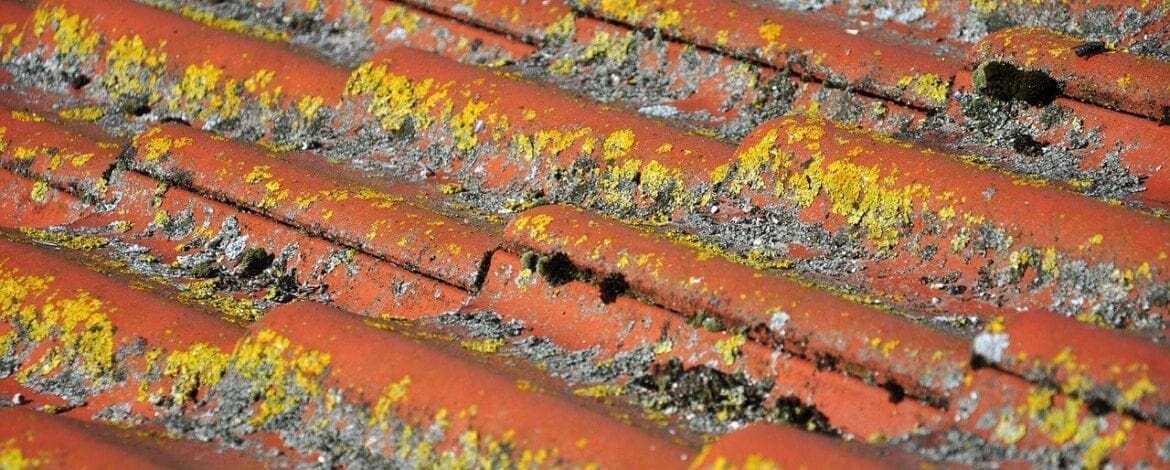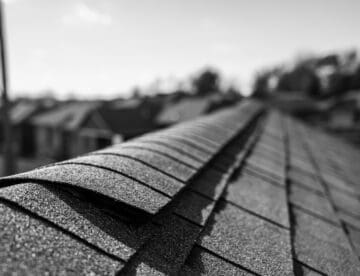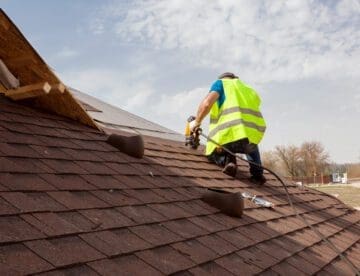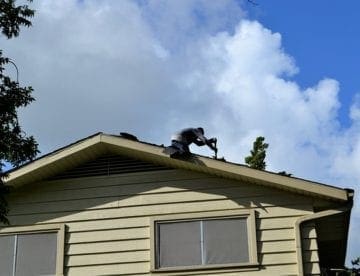Found mold on your roof? It’s easy to worry. Mold on the roof is sometimes a sign of a bigger underlying issue. And, removing mold from your roof is by no means an easy thing to do. Few homeowners decide to remove roof mold DIY and instead rely on professional roofing contractors to get the job done. But if you’re determined to fix the problem yourself, here’s everything you need to know about roof mold removal.
Can you prevent mold from growing on your roof?
If you live in a hot and humid climate, you’ll have a tough time trying to prevent mold from growing on your roof. But, if you notice mold on your roof, there are a few things you can do to minimize the damage mold can inflict:
- Keep your gutters clean — Make sure your gutters are always free of debris. Gutters should be in good condition, able to direct the water away from your roof without any leaks along the way. You can use a leaf blower to remove debris and leaves from your gutters. A leaf blower will efficiently do the job without damaging your roof.
- Keep the branches trimmed — If you have any trees around your house, make sure to keep the branches trimmed. Properly trimming and pruning branches will minimize the number of leaves and debris in your gutters. It will also allow extra sunlight to reach your roof, which will help decrease the moisture that fuels mold growth.
- Remove roof mold promptly — If you find mold on your roof, remove it asap. You’ll prevent it from spreading to other areas and effectively minimize any damage it does to your roof.
Is it mold or algae? How to tell what’s on your roof.
If you have a moldy roof, it can consist of algae, mold, and moss. All require moisture to survive and grow. So how can you tell the difference between them, and does it matter?
The main difference between mold and algae is that mold is a fungus, while algae is a plant organism. However, both need sunlight and moisture to grow.
Moss is unlike either of the two and has plant-like characteristics, with leaves and tiny stems.
Unlike algae, mold won’t form on the roof if there’s excessive sunlight. This is because it’s allergic to it and will die out if the temperature is too hot or not enough moisture is on the roof.
Mold will try to find its way down to your attic, which offers almost ideal conditions for its growth year-round. It can also be much more challenging to remove than algae and nearly impossible to get rid of if you have wooden shingles.
How to Remove Mold from Roof Shingles
Removing mold from roof shingles is not an overly-complicated undertaking. Still, it does take some time and a lot of effort. To keep it as simple as possible, here’s a quick step-by-step guide on how to remove mold from roof shingles:
- Mix ¼-part chlorine bleach with ¾-part water and add one tablespoon of trisodium phosphate. Pour the mixture into a pump sprayer. You can also opt for a commercial mold remover. Just make sure to do some research on the product before using it.
- Generously apply the solution to the moldy areas of your roof.
- After spraying the moldy shingles, leave the solution to sit for 30 minutes to an hour.
- Using a low-pressure hose, work your way downwards and thoroughly rinse the shingles, making sure you remove the solution entirely.
- After cleaning the roof, run your fingers across the shingles. If there’s still some slime on them, repeat the process one more time.
Make sure to take the correct preventative steps to avoid doing further damage to your roof. A common mistake that homeowners make is using a pressure washer to rinse off the bleach from the shingles. We advise against this.
The high pressure from the washer can damage the protective layer on your shingles and make them even more susceptible to mold in the future.
Be Careful Up There
Lastly, it’s important to mention that removing mold from your roof can be dangerous. If you get close to the mold, you’ll be exposed to potentially harmful spores. Needless to say, going up on the roof can be hazardous on its own, as you can easily injure yourself if you’re not careful. For these reasons, it’s best to leave this to experienced professionals.
Hiring Roof Mold Removal Contractors
Mold can be a sign of a more significant problem, such as a roof leak or wood rot. Although you might not see any visible structural damage, your roof might be in bad shape and need extensive repair.
An experienced contractor will remove roof mold and will also know where to look to find any underlying structural problems with your roof.
If you opt for a quality roofing service, you can be confident that your roof will get the best possible treatment. A roofing contractor will have both the tools and knowledge needed to quickly and safely remove roof mold.
Also, the products professional roofers use are better-quality than commercial products you can find in your local store. With all of this in mind, you can rest assured that the job will be done right and that your roof and home will be free from harmful mold spores.
Call us today for help removing roof mold.
If you’re looking for more information on this topic or want to schedule a free consultation for your roofing project, contact us today. Call 813-373-9088. Or fill out our online contact form, and we’ll get back to you asap.




